There are many video-game aficionados here at Ravinia and our team jumped at the chance to play games at work! To prepare for the CSO's performance of Disney's Fantasia and Fantasia 2000 on July 12, we tried out the new Fantasia video game, which allows you to "conduct" the iconic music from the movie using
Opinion
A Video is Worth 1000 Words For These Unique Concerts
For the adventurous concertgoer, we’ve compiled a list of a handful of our unique attractions, complete with videos that encapsulate these events better than any words could.
Our Staff Can’t Wait To See These 2015 Artists
With over 120 different concerts to choose from this summer at Ravinia, you might be interested in some help finding the perfect fit. We asked our eclectic and knowledgeable staff which concerts they are most excited to see this season in order to give you the inside scoop and perhaps introduce you to some quality concerts you may have overlooked.
2014 Ravinia Selects - Pedro
Ravinia is a very unique place in that there is a such a variety of concert experiences, I am still learning more and more every summer. From the picnic on the lawn, to dining on the Park View Terrace, to Lawncierge, or sitting in reserved seating, everyone ones experience is unique.

2014 Ravinia Selects - Patrick
In his selects, Patrick aims to capture the essence of the Ravinia experience. While for some that means sitting inside the pavilion, getting as close to their favorite stars as they can, for others that might mean sitting on the lawn with a picnic getting as close to their favorite people. This variety of experience is what makes Ravinia such a special venue to see a performance. Below he shares his favorite captures in no particular order.

2014 Ravinia Selects - Russell
After a deep breath we plunge—spiraling into each day of our lives with as much fortitude and focus as we can muster. Many times we loose our way and have to reset ourselves, begin again with fresh eyes and mind. For the last 9 years, I have dedicated my Ravinia career to helping millions find that escape and rejuvenation in their lives—as music can heal all.
Often times, one thinks of a sticky floored theatre with egregious beer prices and bad sound to be an agreeable concert experience. I, on the other hand, am spoiled with the offerings of our famous lawn and any beverage I choose to bring in. This place is so much more—Ravinia changes you.
The first of my three image choices from this summer is a whimsical one. Richard Hunt, a Ravinia Life Trustee, world-famous artist and, more important, a man whom I call my friend, is pictured here interacting with a sculpture.
Food Network Addiction

A while back, South Park aired a very funny episode in which one of the boys’ fathers becomes hooked on cooking shows. I can sympathize; I should be standing in front of a self-help group and declaring, “My name is John, and I am
Naked Singer? Cue The Television Crews!
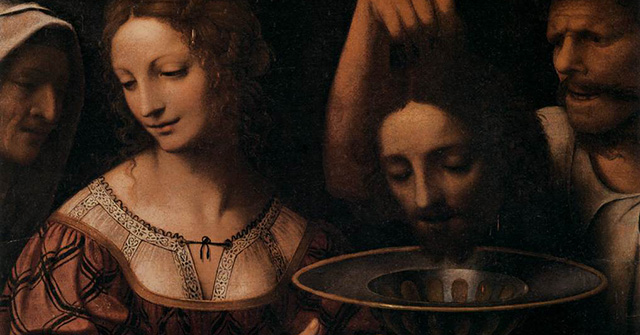
Before working at Ravinia, I spent slightly more than 13 years in the public relations department at San Francisco Opera. During all that time, the various general directors under which I worked unceasingly complained about the lack of TV coverage the company’s productions received. For every opera that was produced there, a media alert would be sent to all of the local television stations, desperately trying to interest them in coming to the dress rehearsal to publicize the opening. But it was mostly to no avail; even in an arts-crazed town like San Francisco, opera was deemed too esoteric an activity to be of interest to the general public.
But during the summer of 1993, SFO mounted a production of Richard Strauss’s Salome with opera star Maria Ewing in the title role, one of her most celebrated portrayals. Part of the attention she attracted stemmed from the fact that not only did she do her own dancing for the famous “Dance of the Seven Veils” (many opera divas leave that duty to a dancing double), but she also followed Oscar Wilde’s original stage directions that Salome should conclude the dance stark naked. Even singers who did their own dancing in other productions wore at least a body stocking for modesty.
In advance of the dress rehearsal, I struggled to find a way to imply without explicitly stating that Ms. Ewing would be baring her all—after all, we were a major international opera house and didn’t want to sound sensationalistic or exploitative. So I used phrases like, “SFO ‘Unveils’ New Salome Production.”
I must have succeeded: no fewer than five TV news crews showed up.
It should be noted that since Ravinia’s Salome on August 2 is a concert performance, Metropolitan Opera star Patricia Racette (who is undertaking the title role for the first time in her career) will remain fully clothed. As will the Chicago Symphony Orchestra.
Too Hot For Chicago

Richard Strauss’s sensational opera Salome, which had its world premiere in 1906, first came to Chicago in 1910, with soprano Mary Garden in the title role. The legendary singer would have a number of close ties with Chicago, but her Salome created a scandal seldom associated with the world of opera.
The Oscar Wilde play upon which the opera was based had originally been banned in England under a law that forbade stage depictions of Biblical subjects, but in actuality it was most likely because of the specific events depicted. To see a teenage princess dance with and ultimately kiss the mouth of the severed head of John the Baptist shocked many at the beginning of the 20th century, and the opera similarly met opposition—disapproval by the Catholic Church, for instance, kept Mahler from conducting it during his tenure as music director of the Vienna State Opera.
That Darned Tritone
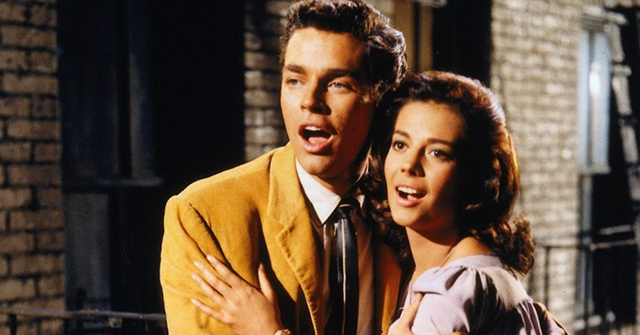
Notions of which intervals in music are considered pleasing have certainly changed drastically ever since the first polyphony (more than one musical line at a time) emerged in Western music around 900 C.E. Medieval theorists had some very specific notions as to which combinations of sounds should be allowed and which should be avoided. And none was avoided more than the interval known as a tritone, so named because it comprises three whole steps—in the key of C Major (the white keys of the piano), it occurs between F and B. Theorists considered the interval to be unstable and dissonant, and for that reason it was avoided not only in harmony, but even in melodic lines for nearly a thousand years.
When music students first enter conservatory-type schools, they are traditionally required to take a course in “sight-singing,” a thorn in the side of many of music student, unless they possess “perfect pitch,” which is quite rare even among accomplished musicians. In order to identify and sing various intervals, many students learn them as part of a well-known melody. For instance, an ascending perfect fourth is the first two notes of “Here Comes the Bride”; an ascending major sixth is outlined by the first two notes of the iconic musical tag for “N-B-C.” And of course, different students might choose different melodies, depending on what they are most familiar with.
But the tritone? That’s a much harder one to find. And so virtually all music students learn an ascending tritone as being the first two notes of the song “Maria” from West Side Story.
Was Bernstein, who composed that immortal score, purposely doing something that had once been “forbidden” to make some sort of a point? Dennis Polkow, who has written an article for Ravinia magazine on the musical, points out that it also occurs right at the beginning of the piece between the second and third notes of the little three-note signal that is played by the orchestra as well as whistled by the gang members. Perhaps it is meant to convey the “dissonance” between the warring factions of the Sharks and the Jets.
Or maybe it’s just Bernstein being his iconoclastic self, using whatever means he had at his disposal to achieve whatever effect he was aiming for. But one thing is certain: Most music students will never hear “Maria” the same way again.
Gorgeous George
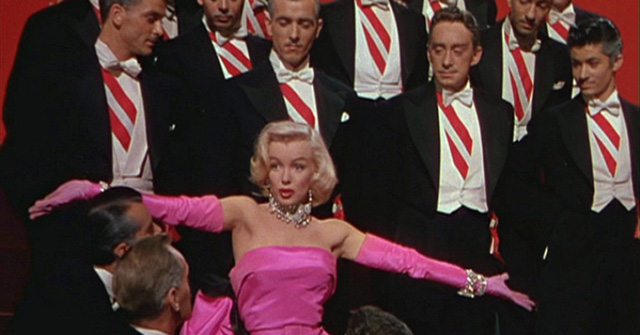
Recently I was re-watching a classic Marilyn Monroe film, Gentlemen Prefer Blondes, a delightful musical romp in gloriously garish Technicolor. This time I was struck by something during the iconic song, “Diamonds Are a Girl’s Best Friend,” the production number famously parodied by Madonna in her music video “Material Girl.” What made it new to me this time was having recently learned that one of the anonymous chorus boys in the original number in the film would later go on to win an Academy Award as Best Supporting Actor for his portrayal of Bernardo in the blockbuster classic musical film version of West Side Story. His name: George Chakiris (pictured above on the far right).
Say It Isn't So, Steven!

Not that long ago I read reports that producer/director Steven Spielberg has expressed interest in doing an “updated” remake of West Side Story. Yes, that’s correct—we are talking about remaking one of the most beloved and honored movies of all time. West Side Story received 11 Academy Award nominations and won 10 Oscars, the most of any film before it with the exception of Ben Hur. I have no idea how serious Spielberg is—the reports say merely that he has “expressed interest,” which, considering his Hollywood clout, is enough to make movie studios fall all over themselves trying to accommodate him. In this case, Fox Films, which owns the rights, has already agreed to give permission.
Commercials and Classics Don't Mix!
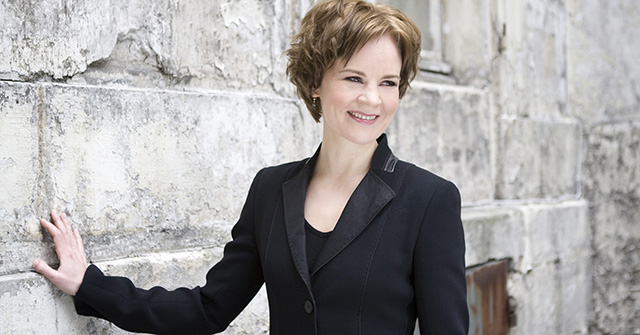
For the second issue of Ravinia magazine, we decided to commission local journalist Wynne Delacoma to write a piece about the phenomenon of woman conductors, prompted by this summer’s Ravinia debut of conductor Susanna Mälkki. Understandably, Mälkki, as well as Marin Alsop, the Baltimore Symphony music director who has conducted at Ravinia for four seasons, prefer not to make an issue of it, rightfully contending that their actual conducting should speak for itself. But the infrequency with which today’s audiences experience woman on symphonic podiums makes it a subject worth exploring, and Wynne has written an insightful piece on it.
Madonna Mia, Ci Sono Molte Donne!

There’s a frequently repeated joke about the novice opera-goer who comes out of a performance and comments, “Wow, that Don Giovanni was a regular Don Juan!” The joke being, of course, that Don Giovanni IS Don Juan, translated into Italian.
But Don Juan gave his name to more than an opera and a legend; it also became a psychological diagnosis, the so-called “Don Juan complex.” Quite some time ago, TV talk-show host Sally Jessye Raphael devoted one of her shows to “Don Juans,” which she defined as “men who think they are God’s gift to women.” To qualify for participation on her panel, the men had to have slept with—or claim to have slept with—at least 200 women. One of her four guest subjects actually boasted of having had sexual relations with over 1,500 women, a claim that brought a gasp of astonishment from the studio audience.
What they probably didn’t realize is that Mozart’s Don Giovanni would have sneered at that paltry figure. In the first act, Giovanni’s henchman Leporello is explaining the reality of the situation to the scorned and furious Donna Elvira in the so-called “Catalogue aria,” in which he enumerates his master’s conquests: “In Italy, 640; in Germany, 231; 100 in France; in Turkey, 91; but in Spain, 1,003 and counting.” Mind you, the large number of Spanish conquests is not a moral judgment against Spanish women, but merely reflects the fact that Giovanni lived in Spain and, of course, did better on his home turf.
This brings his total to a whopping 2,065. And had Donna Anna not screamed for help in the first scene, it would have been 2,066. All of which makes Sally Jessye’s guests look like rank amateurs. Fortunately for them, at the end of the taping, they were allowed to simply leave the studio rather than being dragged into Hell by a living stone statue, a far more dramatically effective ending. You can see and hear baritone Christopher Maltman pay the ultimate price for his lecherous ways—all to the accompaniment of the glorious Chicago Symphony Orchestra—on August 14 and 16 in Ravinia’s Martin Theatre.
The First Cover Artist

Before there were MP3 downloads, before compact discs and tape cassettes and even phonograph records, there was Franz Liszt. Considered by many to be the first “rock star” of music, he created the solo piano recital and drove his audiences into wild frenzies of adulation with his unprecedented keyboard technique. But he used that popularity to help other composers whose works, he felt, were under-appreciated or insufficiently known. At that time the general public had far fewer opportunities to hear large-scale symphonic and operatic works. Since there was no recording medium yet, Liszt helped disseminate many important compositions by creating transcriptions and arrangements of pieces he felt were noteworthy. Some of his transcriptions were relatively straightforward; others became astonishing fantasies in which various themes from other works were interwoven. But either way, he brought numerous composers to the attention of the concert audiences of his time. Just a sampling of the composers who benefited from his musical proselytizing would include Beethoven, Bellini, Berlioz, Donizetti, Glinka, Gounod, Meyerbeer, Rossini, Saint-Saëns, Schubert, Schumann, Tchaikovsky, Verdi and Wagner.
Whatever Do Music and Film Editing Have in Common?

Every industry has its heroes. In film editing—and especially sound—that’s Walter Murch. You need only watch the scene from Apocalypse Now (1979) where Wagner’s “The Ride of the Valkyries” is blasted from attacking helicopters to know that you’re watching the work of a master. And while Murch has many strengths, it is in editing sound that he is in a league of his own. The sound truly works together with the image in what he does for a total, powerful experience.
If you read his books or listen to him talk, you may notice that he makes frequent references to music; listening to music, playing music, musical structure and music history. The links between music and editing go way beyond the mere fact that background music often guides our emotions in a scene or that shots in montages are traditionally cut predominantly on the beat. I’ve always felt that editing is like playing or composing music, and when I get to edit a video where music is a primary “character,” the overlap of the subject matter, elements and process make my job even more fun.
Last Thursday Ravinia posted the last in a series of 13 videos in which the members of the Lincoln Trio discuss and play piano trio repertoire. Each featured selection is among the choices for the Trio’s audience-request concert on August 15. We made the short videos to introduce voters to the repertoire, and each of the videos, like the music itself, has its own rhythm, tempo, structure, etc. I had fun playing the interview footage off the music: in some videos I used sounds as transition points (like the ponticello in Auerbach or the palm-on-piano-strings in Garrop); in others I let the music strictly guide the rapidity and smoothness of the cuts (like the Higdon and the Smetana); and for something like Beethoven, I felt that less is really more.
I hope you’ve enjoyed watching these. I certainly enjoyed editing them!
Elena Guobyte
Multimedia Production Associate
Tchaikovsky: Too Popular For His Own Good
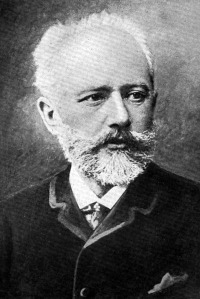 The August 8 concert by the Chicago Symphony Orchestra conducted by Itzhak Perlman will feature Brahms’s Academic Festival Overtureas well as Alisa Weilerstein performing Haydn’s Cello Concerto—both fine attractions in themselves—but for me the highlight will be Tchaikovsky’s Fifth Symphony.
The August 8 concert by the Chicago Symphony Orchestra conducted by Itzhak Perlman will feature Brahms’s Academic Festival Overtureas well as Alisa Weilerstein performing Haydn’s Cello Concerto—both fine attractions in themselves—but for me the highlight will be Tchaikovsky’s Fifth Symphony.
Way back in the 1970s, when Leonard Bernstein became the first conductor to record all six of Tchaikovsky’s symphonies, he made an amusing observation: that a casual concert-goer might easily get the impression that Tchaikovsky composed only three symphonies but, for some strange reason, decided to number them 4, 5 and 6. The first three are rarely performed; the last three are ubiquitous (along with the violin concerto, the first piano concerto, The Nutcracker Suite, “1812” Overture, and many other favorites), a situation that has both helped and hurt Tchaikovsky’s reputation.
Ravel or How the French Heard Spain
In Don Giovanni, when Leporello is trying to convince Donna Elvira that the eponymous gentleman is not worth it, Leporello pulls out a catalog of Don Giovanni’s conquests: “Madamina, il catalogo è questo.” The conquests include 640 in Italy, 231 in Germany, 100 in France, 91 in Turkey, but in Spain, 1,003.
This never fails to provoke audience laughter. But when it comes to eroticizing—and exoticizing—Spain, this quote is part of a much larger picture. Western art, and especially 19th century art, is riddled with portrayals of Spain as romantic, sensual, lascivious and colorful. The “Spanish” paintings and prints by Manet, for instance, depict singers, guitar-players, dancers, bullfighters, bandits, Gypsies; an assortment of “types” that is much like the cast of characters in Bizet’s Carmen. But these are just a drop in the ocean of works that formed the image of Spain as the exotic “other,” an image that is much indebted to Spain’s Islamic heritage. Muslim presence there lasted nearly 800 years and resulted in rich and complex cultural output, but in Western art the Muslims of Al-Andalus were depicted as epic, romantic and erotic, even if savage. To get a sense of this, just think of the opening of Shakespeare’s Othello, where Ophelia is imagined in the “gross clasps of a lascivious Moor.”
Lucky Substitutions
 Opera audiences are usually disappointed to see an administrator stride onstage before a performance to announce a last-minute cast change, but every so often the audience gets a lot more than they expected. A case in point is soprano Latonia Moore, who will sing the title role of Verdi’s Aida at Ravinia on August 3. In March 2012 the same role was the vehicle of her stunningly triumphant Metropolitan Opera debut when she stepped in to replace the ailing Violeta Urmana, an event shared and celebrated by many thousands of operaphiles who heard the performance on a live radio broadcast.
Opera audiences are usually disappointed to see an administrator stride onstage before a performance to announce a last-minute cast change, but every so often the audience gets a lot more than they expected. A case in point is soprano Latonia Moore, who will sing the title role of Verdi’s Aida at Ravinia on August 3. In March 2012 the same role was the vehicle of her stunningly triumphant Metropolitan Opera debut when she stepped in to replace the ailing Violeta Urmana, an event shared and celebrated by many thousands of operaphiles who heard the performance on a live radio broadcast.
Moore’s “star is born” experience puts her in exalted company, indeed. Back in 1957, another young American soprano made an unexpected debut in the same role after Antonietta Stella became indisposed at San Francisco Opera, where Leontyne Price had just made her company debut as Madame Lidoine in the American premiere production of Poulenc’s Dialogues of the Carmelites. It was her first opportunity to perform the title role of Aida, but hardly the last; Price came to virtually own the role, reigning as the pre-eminent Aida until her retirement from the opera stage in 1985.
Master Classes Not Just For Musicians
VIDEO: James Conlon on his philosophy of conducting master classes.
When I was a junior in high school, I attended my first master class. It was at a four-day conference, and as I was too scared to attend as a performer, I went as an auditor instead. That means that I got to attend all the sessions but didn't play at any of them. I think I spent half my savings to do this.
At Ravinia, you don’t need to spend your savings to attend a master class. They’re free! In fact, not only are they free for the audience members, they’re also free for the incredibly talented young professionals who have been accepted into Ravinia’s Steans Music Institute (RSMI) each summer for the last 25 summers.




